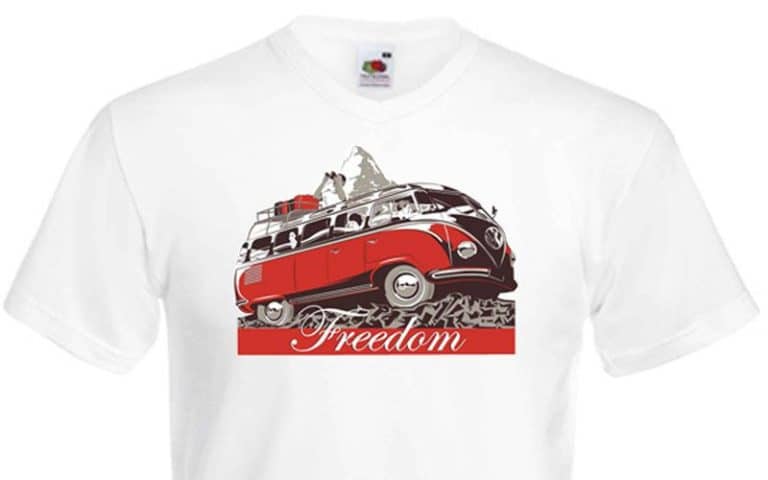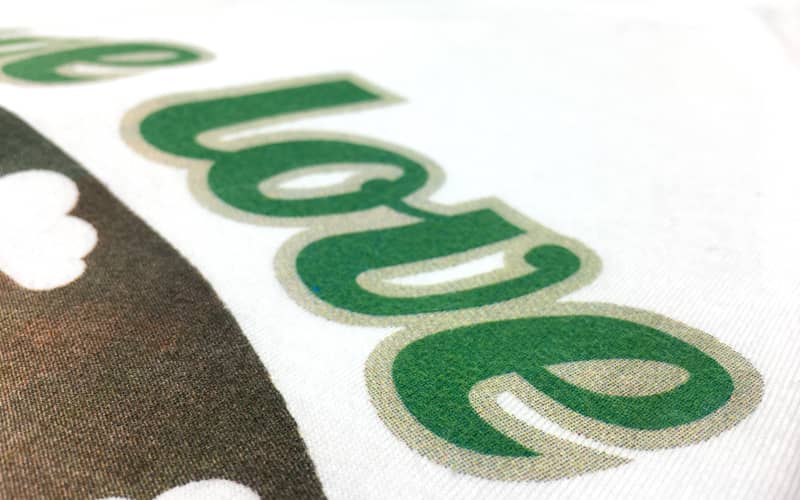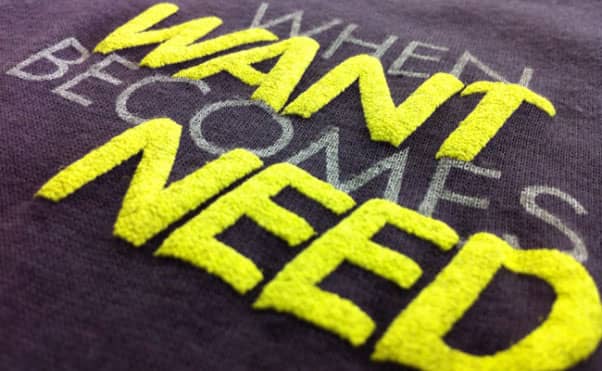T-Shirt Screen Printing
What is Screen Printing?
Screen Printing is the most common type of printing technique for customized t-shirt and garment printing. We typically suggest this method for larger quantity orders of 50 units or more because of the set-up fees involved and economies of scale that are achievable. Screen printing produces the highest quality print results out of all the other printing techniques. For example, prices can range as low as £1.45 per t-shirt on an order of 250 t-shirts

The process
The first step involved in screen printing is making the screen that will basically perform as a stencil for your printed design or artwork.
The process involves transferring vector artwork printed onto a transparent film, known as a positive, onto a silky mesh surface coated with a chemical emulsion. Then, this surface is exposed to light.
The light dissolves the chemical around the design, creating a stencil for printing. The screen must be washed to remove the residual emulsion from the surface and leave it ready for reuse in the future. You now have your screen and are ready to print onto your t-shirt or garment!
After setting up the screen, place your desired garment onto a platen, resembling a small ironing board tailored for t-shirts. Then, position the screen onto the machine, ensuring correct alignment for printing.
Correct alignment is crucial to prevent misalignment during printing. Next, roll the specific colored ink onto your screen using a squeegee, then transfer it directly to your chosen t-shirt or garment.
The machine rotates and exposes the platen under light to dry the ink on the garment. With each successive screen required by your design or artwork, this process continues to occur. After applying and drying all the colors, your t-shirt or garment is finished and ready for folding.



It is important to remember that for every colour in your artwork or design, a separate screen is required. This is what we refer to as set-up fees and is the sole reason why we recommend screen-printing on larger quality orders, as it can be quite expensive, especially for small-run quantities. Please note that we ask for vector artwork, which is like an Adobe Illustrator (.ai, .eps or a coral artwork) file. The reason being is that we must require files in this format so that we can separate each colour from within the design or artwork to determine how many screens will be needed for the print job.
